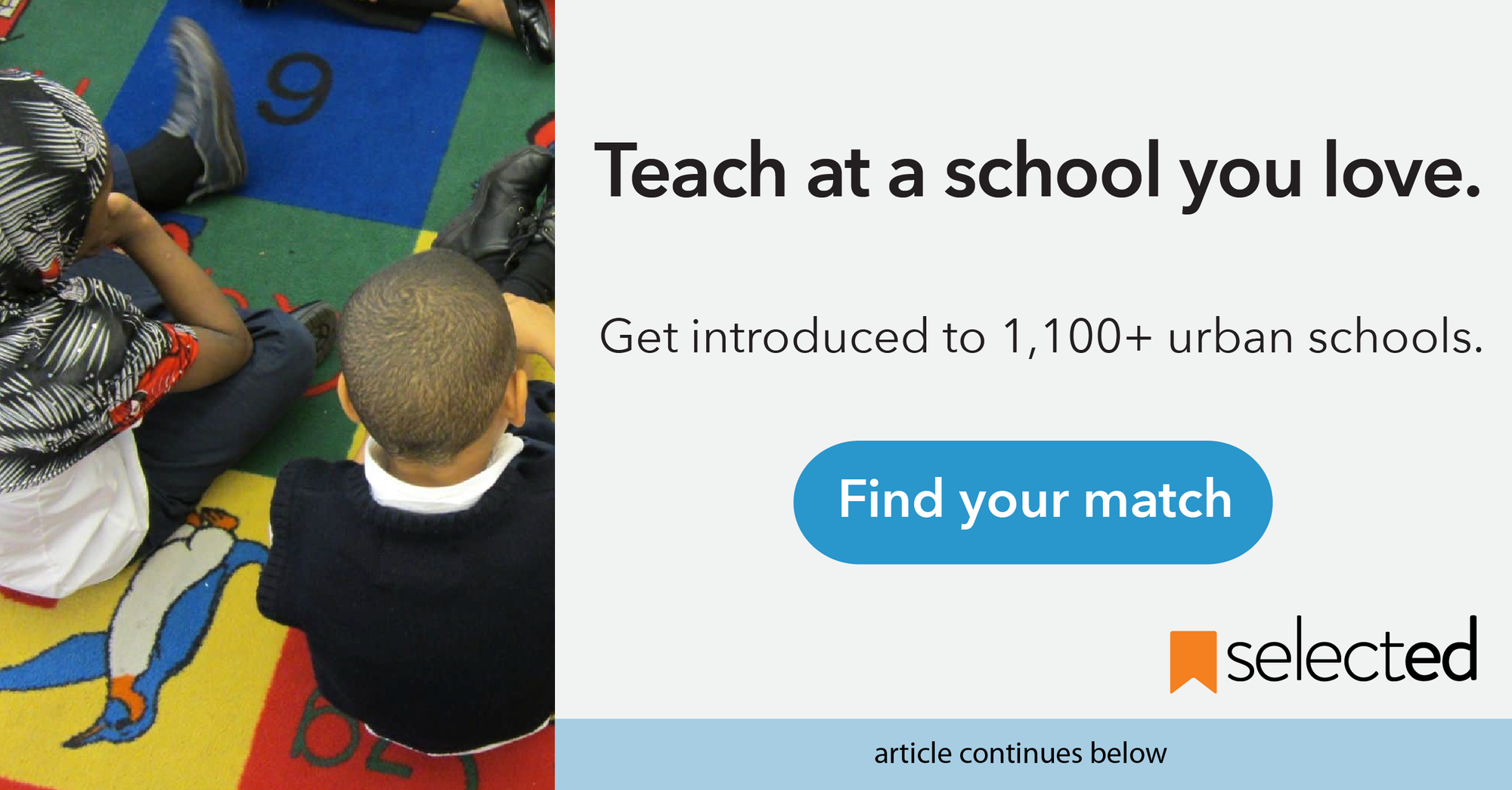Co-Teaching: 7 Ways To Cultivate a Strong Relationship With Your Teaching Partner
The key to maximizing the impact of your co-teacher or teaching partner is effective communication. Here are seven proven ways to build a strong relationship.

Teaching is hard enough as it is. And while having another educator in the room can be a tremendous asset, when problems between the adults arise - usually due to a lack of communication - it can create a tense working environment for all involved. Worse yet, students are also negatively impacted by their teachers’ disagreements. Bottom line, in the same way a strong relationship with a teaching partner can make your year, so too can a weak one break it.
Whether your teaching partner is a co-teacher, teaching assistant, paraprofessional, or member of the support team, cultivating this relationship must be a priority during the first weeks of school. And regardless of the title and experience level of your teaching partner, your goal should be the same: to maximize teacher impact so that every student’s needs are met. Basically, each lesson should be significantly more impactful than it would be if there were only one teacher in the room; which is absolutely impossible unless both teachers are on the same page.
The key is effective communication, and here are eight proven ways to get it right from day one.
Break Bread
We know how challenging it is to even find the time to eat during those first chaotic weeks of school let alone go out to eat. But we promise you that if you make the time to really get to know your teaching partner - you will not regret it. Think of it this way: If you spend six hours together each day, and there are 180 days in the school year, you will be spending over one thousand hours with them over the course of the year. This could quite possibly be more time than you spend with members of your own family. Have lunch, get coffee, grab a drink after school - no matter what works best for you, make the time to get to know each other.
To start, ask them about their lives, and share about your own. Why? You cannot have a strong relationship with another human without knowing a bit about each other’s personal lives. Listen when they talk and try to remember details like the names of their friends, family members, or pets. Pay attention when they perk up so that you know which topics they enjoy talking about.
Then, get into the nitty gritty. Do not skip this step. There are certain questions that will provide you with invaluable information that will guide your decision-making throughout the year. This includes questions about:
- Teaching-related strengths
- Classroom management style
- General irks about teaching or student behavior
- Areas of struggle
- Passions
- Working or communication styles
Play to Strengths
Every educator has at least one forte, and students should have the opportunity to benefit from them. So make a plan for how to integrate these strengths into your lessons.
- Example 1: A para-professional prides himself on the fact that he can deliver an engaging, interactive read-aloud, so you plan for him to read a book to students every Friday afternoon.
- Example 2: Your co-teacher has a knack for scaffolding lessons for students who are far below grade level in writing, so she plans to instruct and take ownership over the same six students each day while you teach the rest of the class.
This is an important step for three reasons:
- Teachers will feel more valued and enjoy their job more if they feel they are truly an asset to the community,
- Students will likely benefit academically from this teacher's strengths,
- In the instance of an assistant or paraprofessional who might feel excluded from whole-class instruction, it gives students an opportunity to see them in a leading role.
Check-in
Schedule time to check in with each other daily, weekly, or bi-weekly, depending on the teacher’s position and degree of involvedness. During this check-in, the first thing you should ask is, “How do you feel like it’s going?” Then genuinely listen to their response. If they are having an issue, ask them what you can do to help and provide suggestions if necessary.
This is also a great time to review your planning responsibilities and evaluate whether the workload seems fair, or if support or restructuring is needed.
Co-Create Rules and Procedures
We know all too well that rules are only effective if they are enforced by all adults in the room. This is much more likely to happen if each adult is involved in the rule-creation process. Circle back to the first conversation you had when you “broke bread” and use this information to guide your planning — What irks you about student behavior? What are you passionate about?
If you do make the rules and procedures on your own, be sure to set aside time to present them to your co-teacher and give them the opportunity to provide input. Above all things, both adults should be in agreement on what the rules and procedures are and how they will be enforced.
Then, present them to the students together. To maximize the impact and to make the process of teaching procedures more engaging, one teacher should lead the directions, and the other should model for students.
Determine Roles For Instruction
A common complaint teachers have about working with another adult in the room is that the other is disruptive, disengaged or just not helpful as they could be to students. You can avoid this by agreeing on expectations before hand.
Clearly define what each of your roles will be during instruction — Will you be using stations? Parallel teaching? Co-teaching? Or, will one teacher be solely assisting and monitoring behavior or assessing? Who is taking ownership of what? And just as importantly, talk through and agree on what both of you will look and sound like, where you will physically be located, which students you both are working with, etc.
Create a Vision for Planning and Collaborating
Plain and simple, have a clear plan for student goals, and who is doing what in regards to planning, teaching, assessing, record-keeping, and performing day-to-day classroom tasks. Ownership over everything should be clearly defined. Put everything in writing and consider posting it in your work area. Both teaching partners will benefit from this.
Revisit and Revise
For most teachers, it’s more intimidating to have an uncomfortable conversation with an adult than a student. But it shouldn’t be. If both teachers are truly on board when deciding on planning responsibilities, classroom rules, and instructional roles - then you are really just revisiting these plans, and possibly revising them.
Pro Tips:
- Avoid having a conversation in front of students at all costs. If one teacher is in a position of power, which is often the case, students will notice. Either whisper, or better yet, wait until you are alone to have the conversation.
- Assume the best, and identify what you noticed using a neutral tone: “Did we plan on you pulling a small group during math today? I thought so. What happened?” Once you have identified the problem, either revise your original plan or decide on other next steps.
- Finally, if you want your partner to have a growth mindset and hold themselves accountable, you need to do the same. Admit when you make a mistake and follow the same approach when attempting to fix it.
Compliment
Teaching is tough work. We all need to be reminded of what we are doing well, and a little goes a long way if it is executed properly. Not a generic “You did a great job today,” but specific, thoughtful, genuine compliments — “I noticed how patient you were with Mikayla today. I really admire that. And did you see how well she responded?” When people receive compliments, they feel supported. When people feel supported, they are both easier to work with and better at their job.
Have another great way for others to connect with their teaching partners? Tweet it here @getselectedco.
About Selected
Selected helps teachers find jobs at schools they love. We offer a free school matching and career support platform for teachers that connects them with 1,200+ PK-12 public and independent schools in urban metro areas in the Northeast and West Coast, including New York City, NJ, CT, Philadelphia, Washington DC, Boston, and Los Angeles. Create a FREE teacher profile in 5 minutes and connect with hiring schools immediately!





